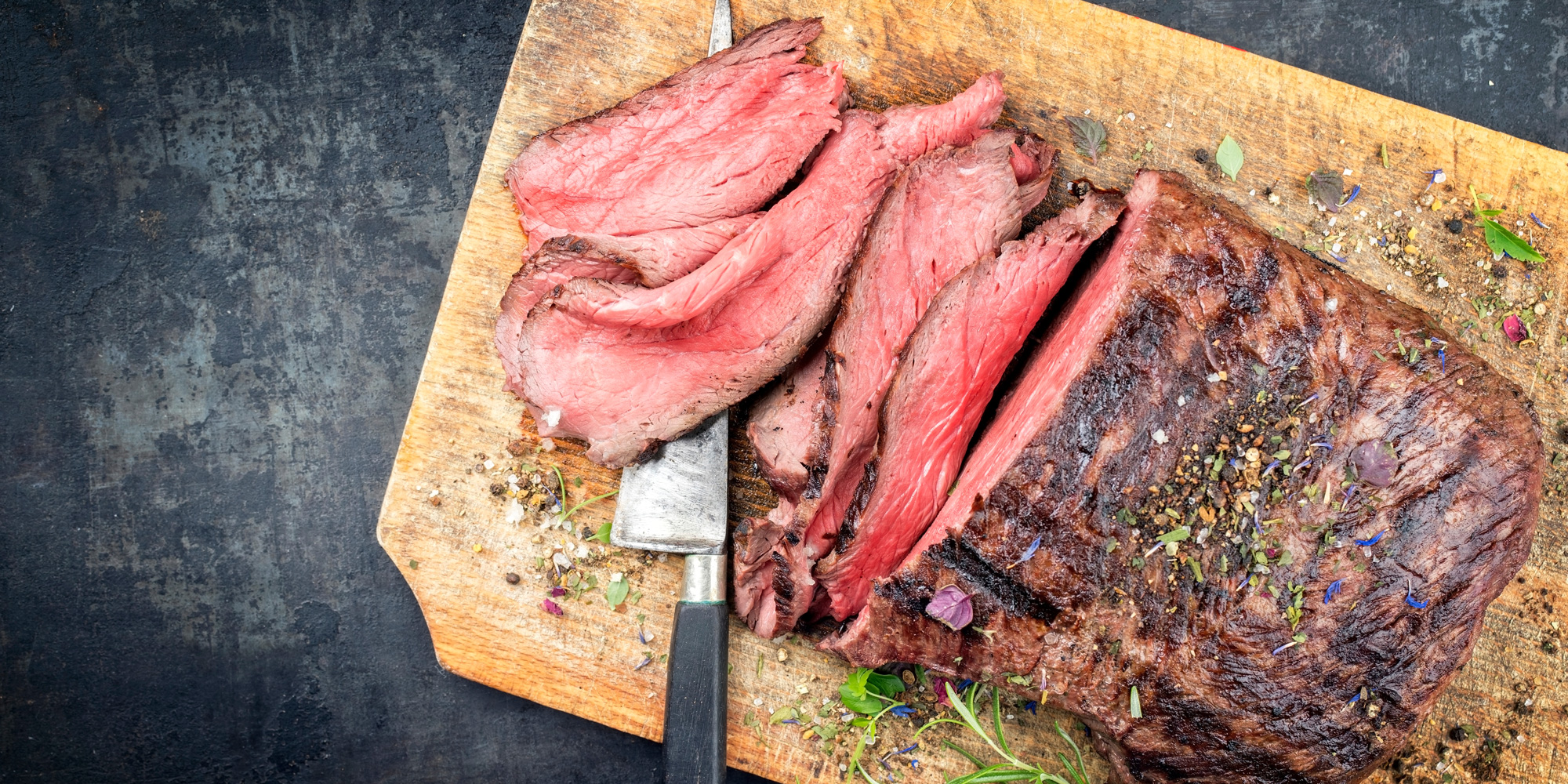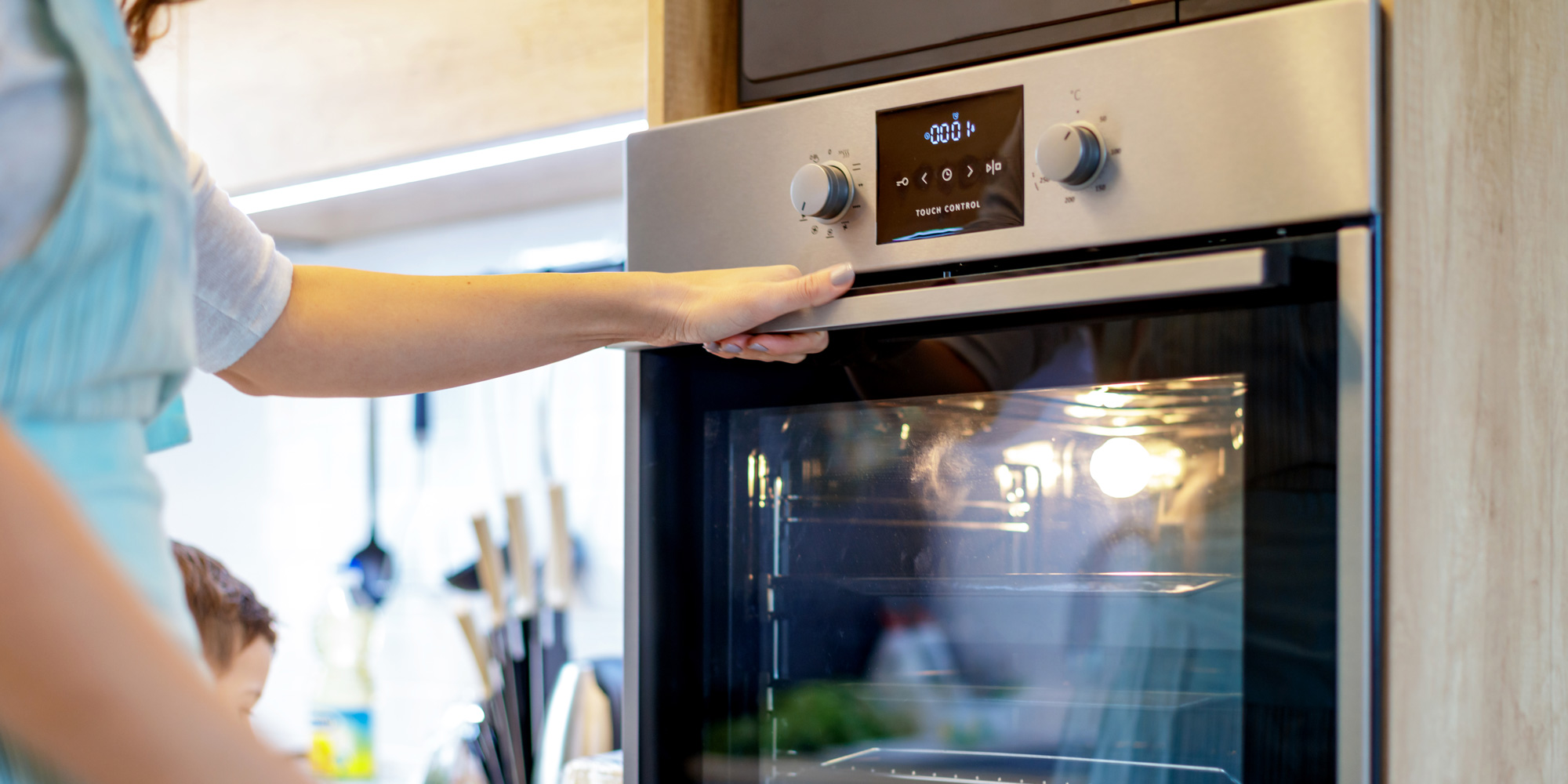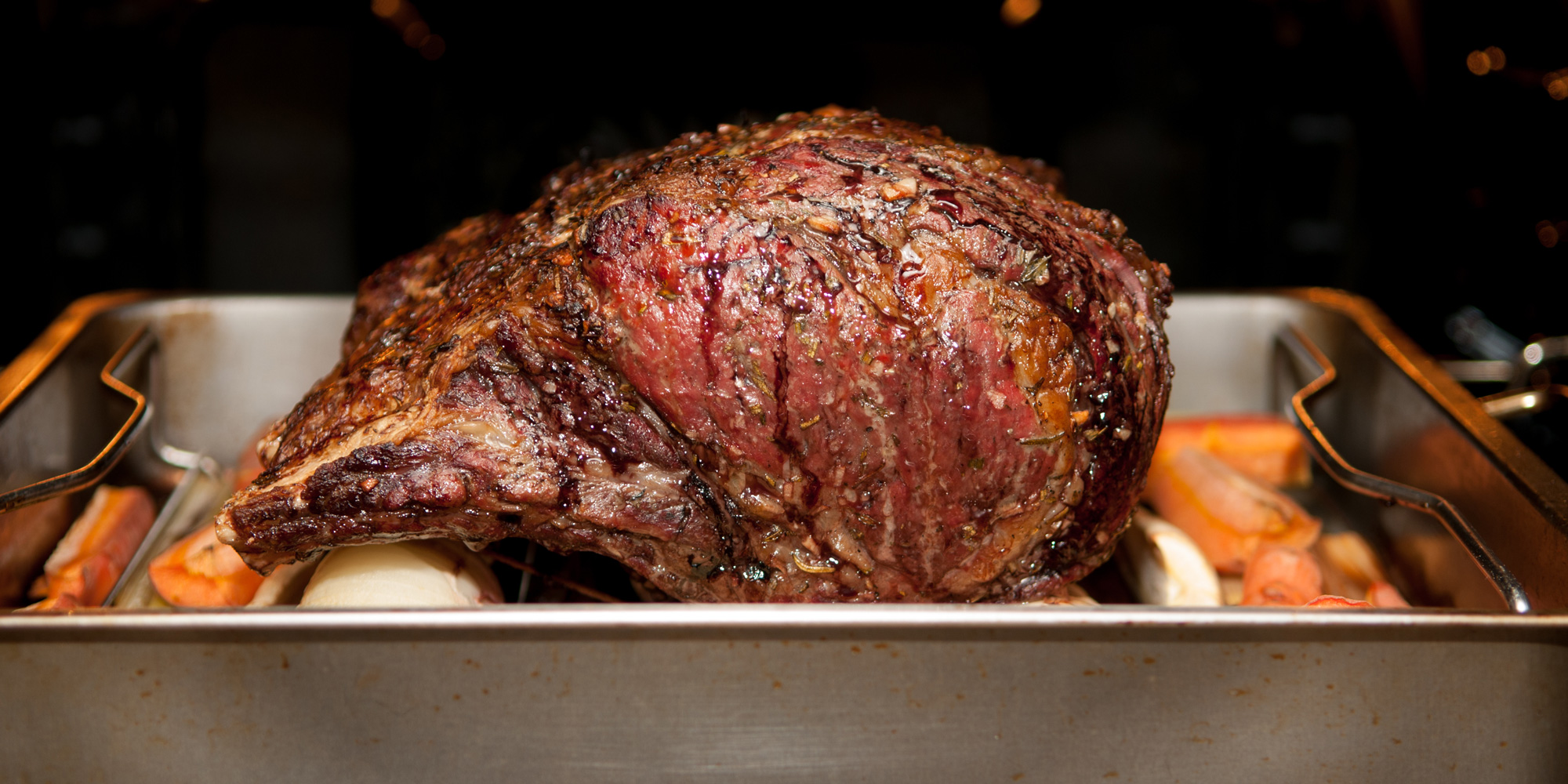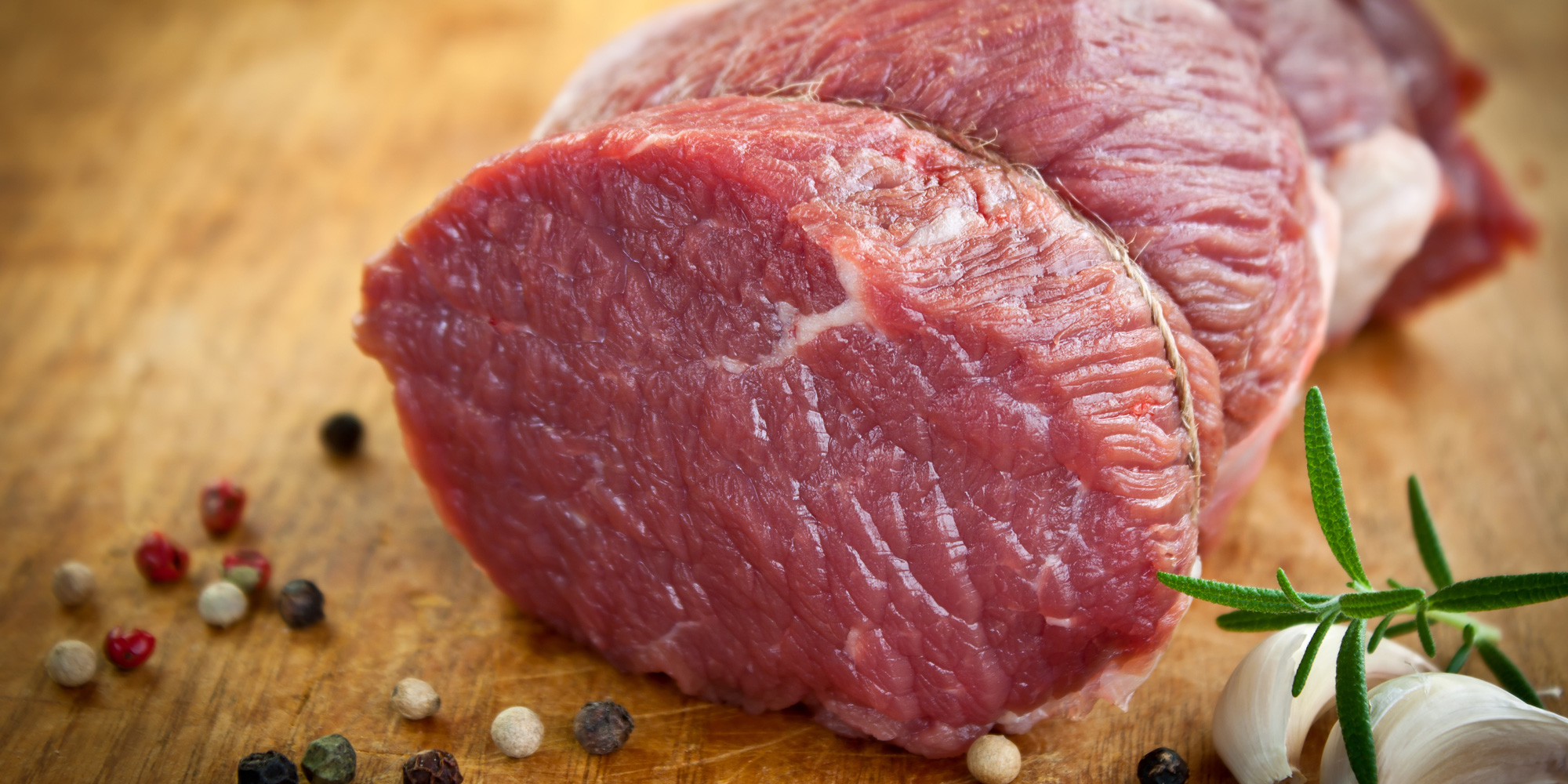By clicking a retailer link you consent to third-party cookies that track your onward journey. This enables W? to receive an affiliate commission if you make a purchase, which supports our mission to be the UK's consumer champion.
How to cook roast beef

In this article
- Roast beef cooking time: how long does it take to cook?
- What size of beef joint is needed for 4, 6, 8 and 10 people?
- Which beef cut is most tender and best for roasting?
- What to look out for when buying beef
- How to air fry roast beef
- Can roast beef be cooked in a slow cooker?
- How long will roast beef keep in the fridge?
- Can a beef joint be frozen?
A perfectly cooked joint of roast beef can be an excellent addition to any Sunday lunch or special occasion, and when cooked properly, is tender, juicy and full of flavour.
To help you prepare a delicious roast beef, we’ve answered common questions, including how many people each size of joint feeds, how hot the oven should be and whether you can roast beef in an air fryer. We also explore how to achieve the right level of doneness, from rare to well done, and how to rest your beef so it stays tender.
Keep scrolling for everything you need to know, plus flavoursome recipes from Delia Smith, Jamie Oliver and Gordon Ramsay.
Roast beef cooking time: how long does it take to cook?
Most recipes suggest cooking beef for around 45 minutes to an hour at 190°C/375°F/gas mark 5 or 200°C/400°F/gas mark 6, but this depends on the weight of the meat and what else you're cooking alongside it. Check the meat packaging as well as the recipe you're following.
Roughly speaking, you should cook beef for around 15-20 minutes per 500g if you like the meat rare, 20-25 minutes for medium-rare and 25-30 minutes for well-done beef.
Both of Delia Smith's traditional beef recipes (see below) recommend having the oven at a higher temperature to start with, 240°C/475°F/gas mark 9, then after 20 minutes turning it down to 190°C/375°F/gas mark 5.
You will need to baste the meat throughout the cooking time. Some recipes only require this to be done once – Jamie Oliver’s Perfect Roast Beef, for example. Others suggest basting the meat more frequently; Delia Smith’s traditional roast sirloin beef, for instance, recommends doing it at least three times.

To make sure the meat is cooked, use a thermometer to check the temperature. Putting it into the thickest part, the meat should be:
- 55°C-60°C for rare
- 65-70°C for medium
- 75°C for well done
You'll need to factor in time for resting the meat once it's cooked, between 15 minutes to an hour, depending on the recipe and weight of the meat. This is to allow the juices to soak back into the meat, making sure the meat remains moist when served.
What size of beef joint is needed for 4, 6, 8 and 10 people?
If you're buying meat on the bone, allow around 400g per person. For a boneless joint, you'll need 200g-250g per person.
According to Delia, if you want to feed six to eight people with ribbed beef and have a little left over, you'll need a piece of beef weighing 2.25kg-2.75kg.
What do you serve with your roast beef? Use our guide on how to make Yorkshire puddings for an extra special Sunday dinner.
Which beef cut is most tender and best for roasting?

Ideally, look for beef that has streaks of fat running through it, giving a slight marbling effect – this is a good sign that it will be packed with flavour. Also, fat around the outside will keep the meat moist and it's great for basting.
According to the National Beef Association, the following four are best for roasting:
Fore rib
This is a third of the way down the back around the ribs. These cuts have a good amount of fat on the outside and running through them, making them particularly moist.
They are sold boned and rolled (where the bones are removed and it's made into a roll shape), French trimmed (where the bones are left in the meat and stick out from it) or on the bone.
Sirloin
Sometimes called top loin, this meat is from a little further down the back of the cow, an area that won't get worked hard so the meat is more tender. As a joint, these cuts are usually sold boned and rolled, but they can be cut in a number of ways, such as for T-bone, tenderloin and fillet steaks.
For roasting, the sirloin is best kept whole as a joint. It's very tender and contains less fat than the rib, so it's a little leaner. These are also often the most expensive cuts.
Silverside and topside
These cuts are at the back of the cow. They're very lean and require basting regularly during the cooking process, so they don't dry out. As there isn't a lot of fat on them, these cuts are sometimes sold with added fat wrapped around.
This meat is also good for steaks instead of cooked as a joint.
Thick flank
The belly of the cow, this cut is particularly good for slow roasting as a joint or braised in pieces. It's also sold as strips for stir frying.
Delia Smith recommends going for a sirloin cut if it's a very special occasion – such as Christmas dinner – and rib if it's a Sunday roast. Most chefs, such as Delia and Nigella Lawson, agree that beef still on the bone is more tasty.
What to look out for when buying beef

Beef should be pink, deep red or burgundy and fat on the outside should be cream.
Look for beef that has been neatly trimmed. Generally, beef joints in supermarkets are sold pre-prepared.
The longer the beef has been hung for, the more flavoursome it will be. Around 10 to 14 days should be a good amount of time, although some premium beef brands hang their meat for a lot longer – up to six weeks.
Supermarket meat is often packaged as soon as it is slaughtered, so it won't have had time to mature. Look out for darker meat, as this means it's likely to have been hung for longer.
Organic beef and beef from rare breeds will be a lot more expensive, but will have had to adhere to stringent standards throughout the animal's life.
Best food and drink – discover our top picks, from red wine to champagne and hot chocolate.
How to air fry roast beef
A recipe by BBC Good Food says to cook a beef joint in your air fryer, you need to get it up to room temperature and then cover it in oil and season to your liking.
Get a golden crust by first roasting it in your air fryer at 220°C for about 10 to 15 minutes. Then turn the temperature down to 170°C and continue cooking for 30-40 minutes.
Don't forget to rest the joint for 30 minutes before slicing and serving.
Can roast beef be cooked in a slow cooker?

Yes, you can cook beef in a slow cooker, though you might want to consider using less expensive meat, such as brisket, as this is less tender but will be tenderised by the slow-roasting process.
Brisket is usually sold boned and rolled and sometimes salted. It's also often used for lean mince.
A lot of the slow cooker recipes we have seen are for beef stews and casseroles, but you can cook an entire joint. Depending on the size, it will take around six to eight hours on a low heat, or three to four hours on a high heat.
If you're keen to try roasting a beef joint in a slow cooker, make sure you get a slow cooker that's big enough. They range in size from 1.5 litres to 6.5 litres, which is big enough to cook for five or more people.
See our pick of the best slow cookers for models that will reliably roast your food to perfection.
How long will roast beef keep in the fridge?
Vacuum-packed beef can last around two to four days in the fridge, but you'll need to check the use-by date on the packaging. If you've bought it from a butcher or local farmer's market and it's loose, check with the seller when you buy it.
Either way, it should be stored in the bottom of the fridge and shouldn't touch anything that's cooked or will be eaten raw.
Can a beef joint be frozen?
Yes, you can freeze a beef joint before or after it's been cooked. If it's uncooked, freeze it as soon as possible and not after the use-by date.
The larger it is, the longer it will take to freeze. Freezing food quickly will preserve nutrients and be safer, so consider cutting it before placing it in the freezer.
Once it's cooked, make sure it's cool before it goes into the freezer. Ideally, slice it so it cools down and then freezes quicker. Whether it's cooked or uncooked, wrap the meat tightly so air won't get to it, as this could cause freezer burn.
How well your food keeps can be massively affected by how good your fridge and freezer are. We've found models that are slow to cool and where the internal temperature thermometers can't be relied upon.
Read our fridge freezer reviews to avoid one of these models.
